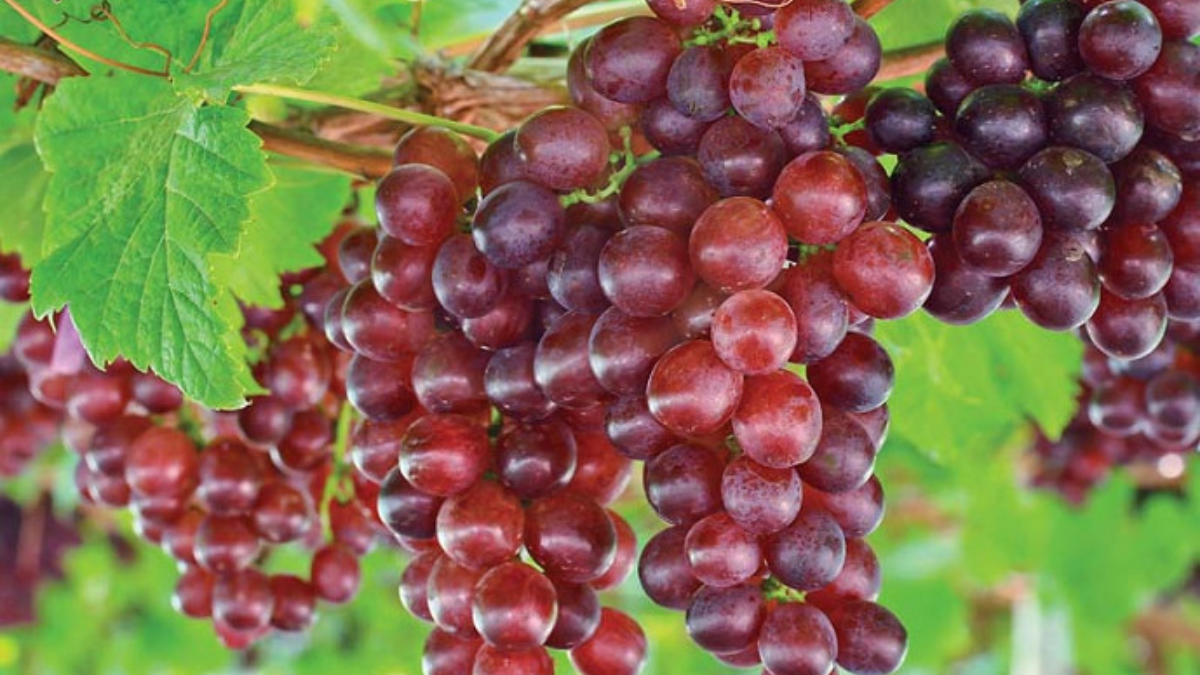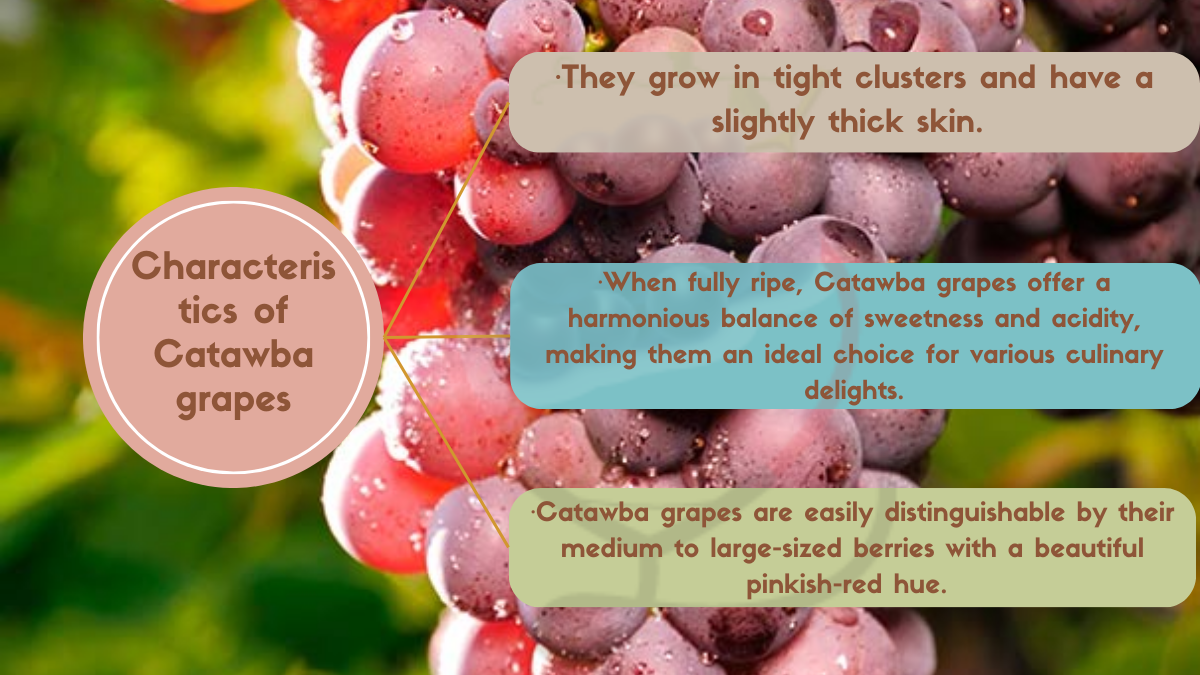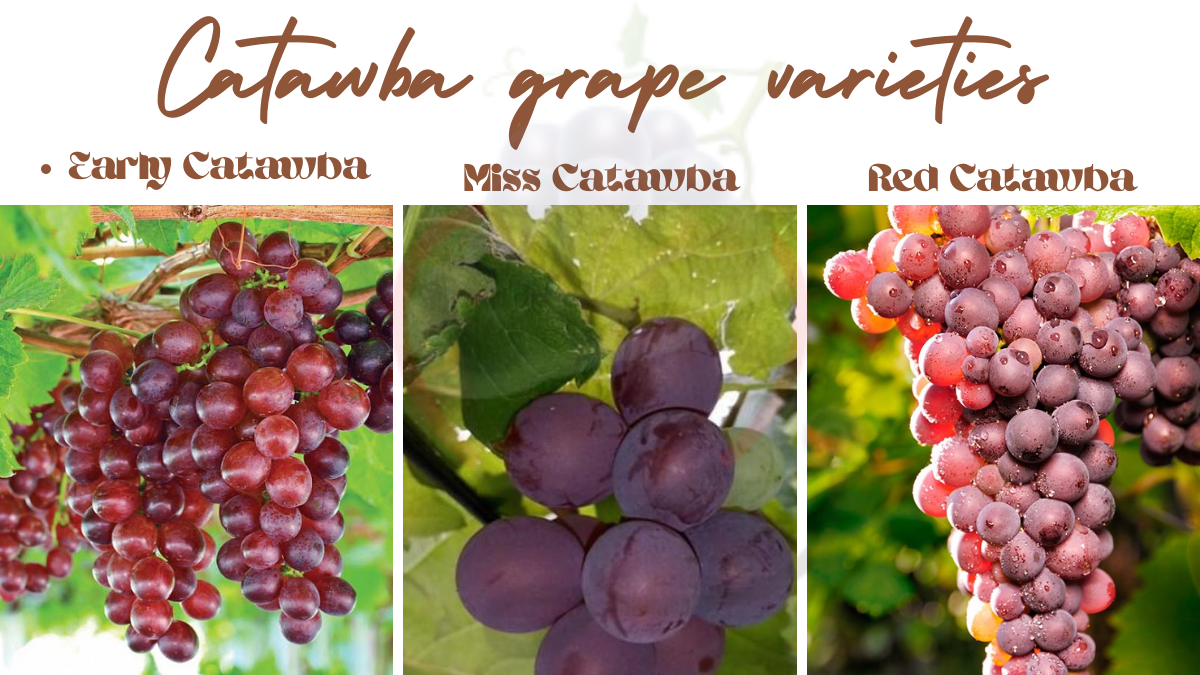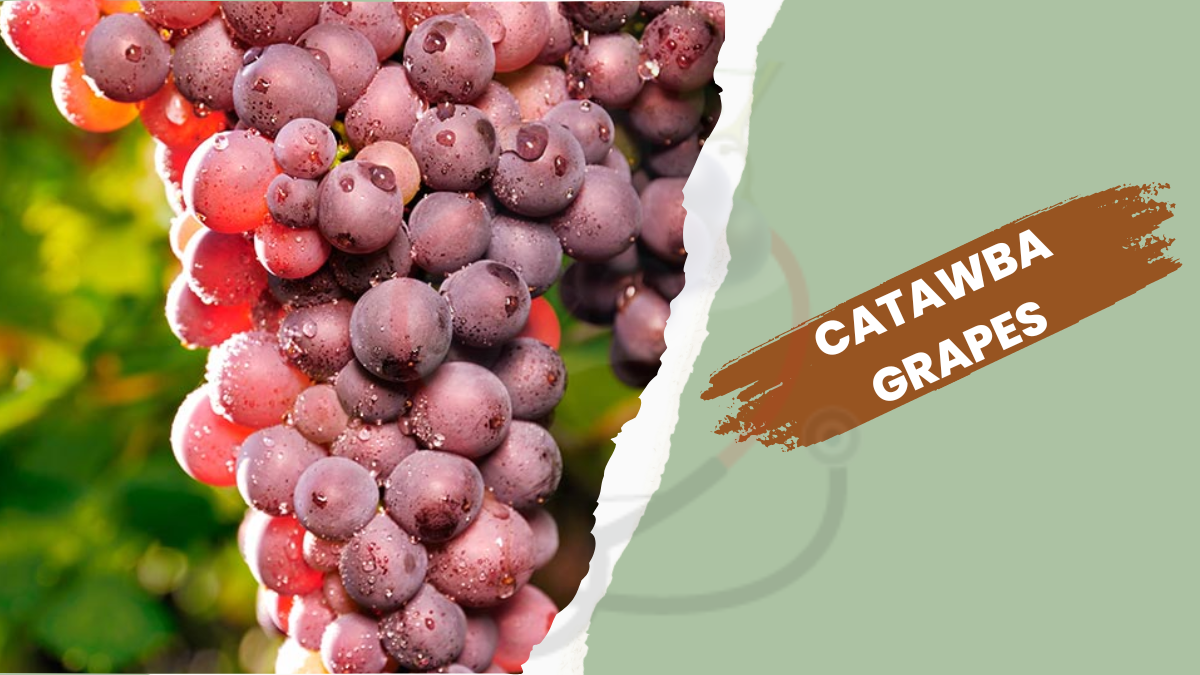Catawba grapes (Vitis labrusca) are a species of grapevines that belong to the Vitaceae family. [1]
They are widely known for their sweet and musky flavor profile, making them a favorite for winemaking, juicing, and snacking.
These grapes are named after the Catawba River in North Carolina, where they were first discovered.
Catawba grapes, native to the United States, are a delightful fruit that has captured the hearts of wine enthusiasts, culinary experts, and health-conscious individuals alike.

With a rich history, versatile applications, and numerous health benefits, Catawba grapes have earned a cherished place in American culture.
In this article, we will explore the fascinating journey of Catawba grapes, from their origins to their culinary and health contributions.
Origin of Catawba grapes
The history of Catawba grapes dates back to the early 19th century.
It was discovered in the 1820s by a horticulturist, Major John Adlum, who recognized its potential for wine production.
Soon after, Catawba grapes gained popularity and became one of the most cultivated grape varieties in the eastern United States.
Characteristics of Catawba grapes

- Catawba grapes are easily distinguishable by their medium to large-sized berries with a beautiful pinkish-red hue.
- They grow in tight clusters and have a slightly thick skin.
- When fully ripe, Catawba grapes offer a harmonious balance of sweetness and acidity, making them an ideal choice for various culinary delights.
Cultivation and growing conditions
1: Soil and climate requirements
- Catawba grapes thrive in well-draining soil with good fertility.
- The ideal pH range for the soil is between 5.5 to 6.5.
- These grapes require ample sunlight for proper ripening and growth.
- They are best suited for regions with a temperate climate.
2: Planting and maintenance tips
- Planting Catawba grapes requires careful consideration of the site.
- They should be planted in early spring to ensure they establish well before the growing season.
- Proper pruning and training are essential to maintain the health of the grapevines and ensure a bountiful harvest.
Health benefits of Catawba grapes

1: Rich in antioxidants
Catawba grapes are packed with antioxidants like resveratrol and flavonoids, [2] which play a crucial role in neutralizing harmful free radicals in the body, thereby reducing oxidative stress.
2: Cardiovascular benefits
The consumption of Catawba grapes has been linked to cardiovascular health. [3]
The presence of natural compounds helps improve blood circulation and reduces the risk of heart diseases.
3: Immune system support
These grapes are a great source of vitamin C and other immune-boosting nutrients, contributing to a strengthened immune system and overall well-being. [4]
Culinary uses of Catawba grapes

1: Wine production
Catawba grapes are celebrated for their role in the production of exquisite rosé wines and sparkling wines.
The aromatic and fruity notes add a unique charm to the wines, making them a popular choice among wine enthusiasts.
2: Juice and jam
The natural sweetness of Catawba grapes makes them perfect for producing delicious grape juice and flavorful jams.
3: Fresh consumption
Of course, enjoying Catawba grapes fresh off the vine is an experience like no other. Their juicy, flavorful taste is a treat for the taste buds.
Popular Catawba grape varieties
Over the years, several Catawba grape varieties have been developed, each with its unique attributes and flavors. Some of the popular ones include.

- Early Catawba
- Miss Catawba
- Red Catawba
- Albino Catawba
Fun facts about Catawba grapes

- Catawba grapes are often referred to as “America’s First Grape” due to their indigenous origin.
- The Catawba wine was reportedly a favorite of several U.S. presidents, including Thomas Jefferson and Andrew Jackson.
Potential challenges in growing Catawba grapes

Cultivating Catawba grapes comes with its set of challenges.
They are susceptible to certain diseases and pests, such as powdery mildew and grapevine leafhoppers.
Implementing proper pest management and disease control practices is crucial to ensure a successful harvest.
Catawba grapes are a cherished treasure of American viticulture.
From their humble origins to their versatile applications in winemaking and culinary delights, these grapes have left an indelible mark on our culture and taste buds.
Their rich antioxidants and health benefits further enhance their appeal, making them not only a delightful treat but also a valuable addition to a healthy lifestyle.
FAQs About Catawba Grapes
Can I grow Catawba grapes in my backyard?
Absolutely! Catawba grapes can be successfully grown in home gardens, provided they receive ample sunlight and are planted in well-draining soil.
Are Catawba grapes only used for wine production?
While Catawba grapes are widely known for their role in winemaking, they are also used to make delicious grape juice and jams.
Are there any side effects of consuming Catawba grapes?
Catawba grapes are generally safe for consumption. However, individuals with specific allergies or medical conditions should consult their healthcare provider before adding them to their diet.
Can I find Catawba grapes at my local grocery store?
Catawba grapes might not be as commonly available as other grape varieties. You might have better luck finding them at local farmers’ markets or specialty stores.

